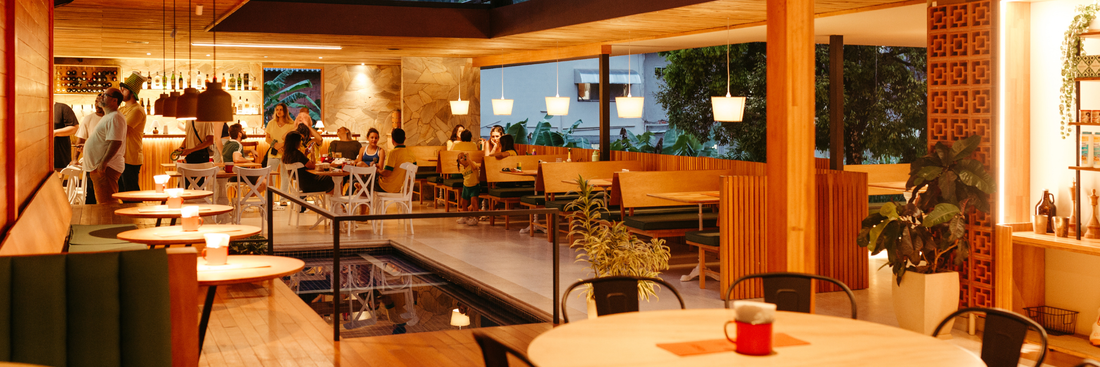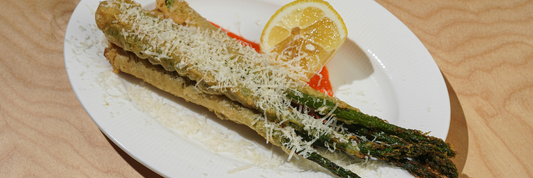Running a sushi restaurant is often seen as a symbol of elegance, craftsmanship, and authenticity. Yet behind every beautiful omakase counter or hand-rolled maki lies a harsh reality many sushi restaurants struggle to survive past their first anniversary.
At Kimecopak, we’ve partnered with dozens of F&B entrepreneurs in Canada who shared one common goal: to build something lasting. And through those journeys, we’ve seen patterns the same five mistakes that quietly drain profit, passion, and potential from even the most promising sushi concepts.
Let’s uncover what they are and how to avoid them.
-
Storytelling the “Sushi Master” to Elevate Brand Value
-
How to Introduce Cold Ramen (Hiyashi Chuka) to North American Customers
-
5 Tips to Store Ramen Noodles Without Getting Soggy While Waiting
The Truth Behind the “90% Restaurant Failure” Myth

Before diving into the causes, let’s address one of the most repeated (and misleading) claims in the restaurant industry.
- The myth: “90% of restaurants fail in their first year.”
- The truth: That number is exaggerated. Studies show that only a fraction of restaurants actually close within their first year, though the first 12 months are still critical for sustainability.
While the exact number varies depending on the source, it’s clear that the first year remains a make-or-break period especially for sushi restaurants with tight margins and high ingredient standards.
The 5 Common Mistakes That Cause Sushi Restaurants to Fail

1. Insufficient Capital and Poor Cash Flow Management
The #1 reason for failure is not lack of customers it’s running out of cash.
- High ingredient costs: Fresh fish, imported seafood, and specialized tools add up quickly. Sushi restaurants typically operate with low profit margins.
- Hidden expenses: Small but essential items like packaging, delivery fees, kitchen maintenance, and marketing often go under-budgeted.
- Unrealistic expectations: Many owners assume profits will appear within months, forgetting that the business usually runs at a loss for the first 3–6 months.
How to fix it:
- Create a weekly and monthly cash flow forecast
- Maintain a financial buffer covering 3–6 months of fixed costs
- Use accounting tools to track spending and profitability
2. Wrong Location and High Rent Costs
Location can make or break a sushi business.
- Mismatch with target customers: A premium sushi bar in a low-income neighborhood is unlikely to sustain consistent traffic.
- Overpriced lease: If rent consumes too large a portion of monthly revenue, it creates long-term stress.
- Poor visibility and access: Limited parking, dim lighting, or hidden entrances can deter spontaneous visits.
How to fix it:
- Compare at least three potential locations before signing a lease
- Calculate break-even revenue versus rent and utilities
- Use local marketing to drive foot traffic

3. Overcomplicated or Misaligned Menu
A common mistake is believing that “more options = more customers.” The opposite is often true.
- Too many items complicate operations: A long menu creates confusion, inventory waste, and training difficulty.
- Menu–market mismatch: High-end omakase pricing may not fit every neighborhood; conversely, cheap sushi can harm brand perception.
- Lack of seasonal updates: Ignoring ingredient price fluctuations can quickly erase your profit margins.
How to fix it:
- Keep 15–25 dishes plus 2–3 signature sets
- Design menus based on profitability, not emotion
- Update dishes seasonally to adapt to ingredient costs
4. Weak Team Management and Loose Operations
Even great food cannot save poor leadership.
- High employee turnover and poor training lead to inconsistent service.
- Ineffective management: Lack of standard procedures, unclear KPIs, and no accountability structure.
- Food waste and inventory loss: Without proper control, theft, spoilage, and over-ordering are inevitable.
- No operational data: If you don’t track sales per dish, customer retention, or peak hours, decisions become guesswork.
How to fix it:
- Hire an experienced manager with clear KPIs
- Build SOPs for every staff position
- Use POS software with real-time inventory control
- Conduct monthly audits comparing physical versus reported stock
5. Lack of Marketing Strategy and Customer Retention
Many sushi owners assume “good food sells itself.” In reality, silent brands get ignored.
- Weak or random marketing efforts: Without a clear plan, the restaurant remains invisible.
- Ignoring social media and reviews: Many diners check social platforms before visiting.
- No loyalty program: Focusing only on new customers neglects repeat guests.
- Lack of digital presence: No SEO-optimized website, no Google Business Profile, no delivery partnerships.
How to fix it:
- Build a 12-month marketing plan including content, local SEO, influencer collaboration, and PR
- Optimize your website and Google profile for relevant keywords
- Introduce a membership or reward program for regulars
- Collect feedback and reviews, and respond to every one
The Survival Checklist for New Sushi Restaurants
| Key Area | Action | Expected Outcome |
|---|---|---|
| Capital & Cash Flow | Create detailed forecasts and keep 3–6 months buffer | Avoid cash shortages |
| Location | Analyze multiple sites and demographics | Optimize traffic and rent ratio |
| Menu | Keep items streamlined with signature dishes | Easier kitchen management |
| Staff | Train with SOPs and KPIs | Consistent service and retention |
| Inventory | Use POS system and conduct audits | Reduce waste and theft |
| Marketing | Implement SEO, social media, and PR campaigns | Increase brand visibility |
| Customer Retention | Build CRM and loyalty program | Boost repeat visits |
| Data Tracking | Analyze daily and weekly reports | Make data-driven decisions |
This checklist can serve as a practical roadmap for the critical first year of operations.
From Failure to Sustainability – The Long Game for Sushi Brands

The first year in business isn’t just about chasing profit it’s about building structure and resilience.
Sushi is a discipline, not a trend. Running a sushi restaurant requires precision, focus, and attention to detail from ingredient sourcing to customer experience.
At Kimecopak, we work with restaurants to implement eco-friendly packaging solutions that reduce waste, enhance presentation, and simplify operations. Sustainability isn’t just about the planet it’s about creating a business that lasts, delights customers, and respects both craft and community.
FAQ – People Also Ask
Q1: Is it true that 90% of restaurants fail in their first year?
No, that number is exaggerated. Only a fraction of restaurants actually close in the first year, though the first 12 months are crucial.
Q2: What is the failure rate for sushi restaurants specifically?
No exact statistics exist, but higher ingredient costs and labor intensity make sushi restaurants more vulnerable than casual dining.
Q3: How much capital do I need to start a sushi restaurant?
It depends on size and location, but a reserve of at least 3–6 months of operational costs beyond setup and marketing is recommended.
Q4: How can a sushi restaurant retain repeat customers?
Through loyalty programs, personalized service, social media engagement, and consistent quality.
Q5: Should a sushi business invest in digital tools early on?
Yes, POS systems, website SEO, and online ordering can reduce errors, improve efficiency, and support growth.
-
LEARN MORE about How "Subscribe for a Happy Life" will benefits your business HERE!
-
LEARN MORE about Kim Vu, sharing on the challenges she faced as a former restaurant owner, and how she overcame them to create KimEcopak HERE!




